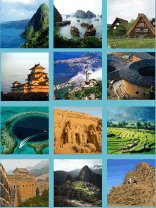Guide 3: Developing effective governance
What this guide will tell you:
This guide will tell you why good destination management and governance matters, and how you can start to develop it in your World Heritage destination.
Steps to success:
- Why this matters
-
Without good management it is virtually impossible to bring about the transformation of tourism that is often necessary to make it sustainable and economically effective. Tourism can and must be shaped and managed so that it is both commercially effective and sustainable in World Heritage sites and their environments.
This is the reason why some of the world's most effective tourism destinations have DMPs (Destination Management Plans) and DMOs (Destination Management Organizations), and many of the most successful World Heritage sites have established some form of authority to manage key processes and issues.
-
 Use an existing DMO (Destination Management Organisation) management structure or engage with stakeholders to create one
Use an existing DMO (Destination Management Organisation) management structure or engage with stakeholders to create one -
Many destinations will have some form of partnership structure or management process; where this exists, become part of it. Often its purpose will be the commercial development of a destination, so site managers need to help stakeholders understand the obligations of being a World Heritage site, the responsibilities that come with it, as well as explaining the opportunities that accompany the designation.
If such a DMO management structure and process does not exist, then you may have to create it (See Guide 2: Developing a strategy for progressive change). Those stakeholders involved in the DMO partnership management structure should be based on the strategic ambitions and aspirations for the destination – build the partnership around the strategy.
There is no blueprint for a management structure. Different societies and different cultures have their own ideas of what good management looks like, how it works, and how different people and organisations work together. However, most experts agree that some structure for managing the issues at a destination scale is necessary. In urban areas, it might be an elected mayor or a local authority with an inspired vision. In natural areas, it might be a dynamic National Park management authority with the mandate to protect the site and deliver on wider destination issues. In many larger destinations, it may be the tourism board or DMO that sets the strategy. Your destination may need a custom solution, but it can probably learn a great deal from looking at good management systems in other sites.
-
 Destination management is different than World Heritage site management
Destination management is different than World Heritage site management -
Destination management usually requires partnership working across the tourism, transport, infrastructure, and conservation sectors. This can be a challenge, as effective partnership requires consensus of shared goals, aspirations, and mutual obligations. Professionals from different sectors may be reluctant to engage with each other or dedicate time to gain new skills. Site managers who need to influence tourism may need a broader range of skills, some knowledge of the tourism sector, or the willingness to learn about it quickly to help make this dialogue effective.
Develop a management structure appropriate to the size and scale of the destination, and define its responsibilities for the management of environmental, economic, social, and cultural issues. Your management organization might be a department, group, committee, private company, a Non-Governmental Organization (NGO), or simply a partnership of different types of organizations linked by a shared strategy. It really does not matter. The important thing is that you can make it work at the destination scale.
If your site faces severe external issues, such as war or conflict, simply do what you can. Some site managers will be dealing with extreme scenarios in which there may be a lack of law and order, lack of basic healthcare, or severe poverty and malnutrition in the local community. Others will be trying to manage a site in places that have challenging political cultures, tainted by corruption, war, ethnic violence, etc. Suggesting perfect heritage management solutions to people in such scenarios seems futile and patronizing, so do the best that you can until the situation improves.
-
 Good governance relies on a number of key factors
Good governance relies on a number of key factors -
The most progressive World Heritage sites have management structures and governance that are extremely open and inclusive. This does not mean that expert advice is not heeded. Instead, a significant number of people in the destination and host community play a vital role in setting the strategy, delivering actions and activities, and monitoring progress. They are able to provide input approving, supporting, or disagreeing with any given action, and may also process knowledge that experts are unfamiliar with.
There is a tendency in many sites to try and retrofit community and stakeholder support, but this is a mistake. Good governance requires a sustained process of interaction. The advantage of starting to develop a governance strategy from a basic level is that you can do things inclusively from the start.
The authority and capacity to control or prevent Outstanding Universal Value (OUV) damaging activities – which often includes making tough, perhaps even counterintuitive, decisions and enforcing them – is crucial. Many of the most progressive World Heritage sites have offered businesses and communities dynamic and sustainable alternatives to activities that damage the site's values. However, they will also enforce protection when it is necessary.



